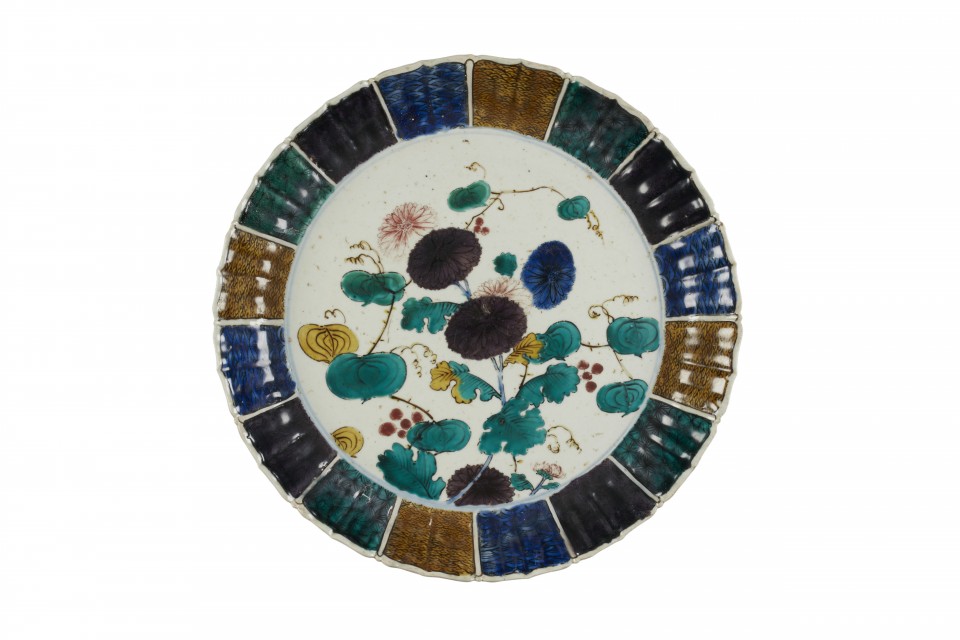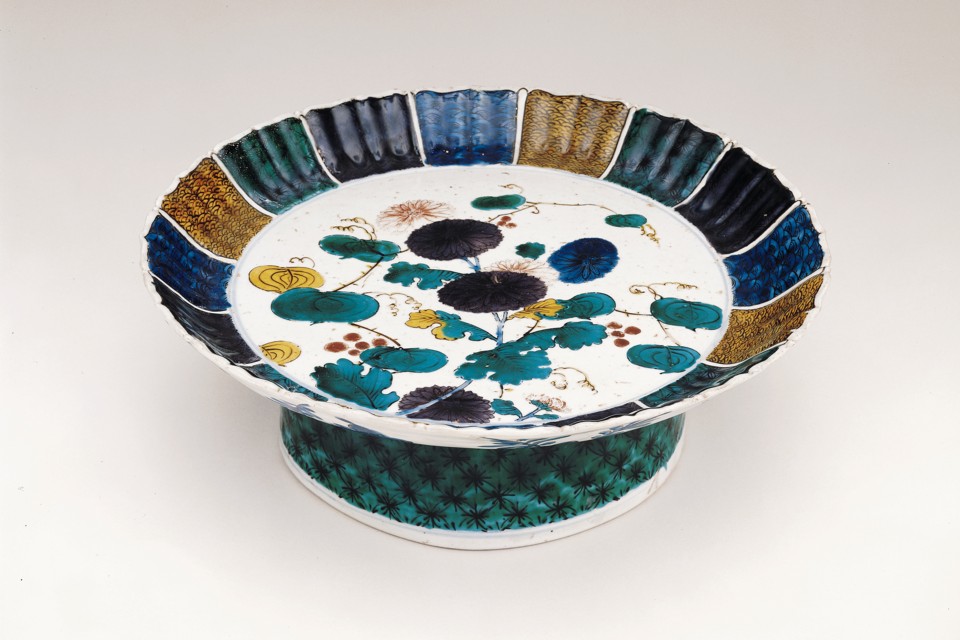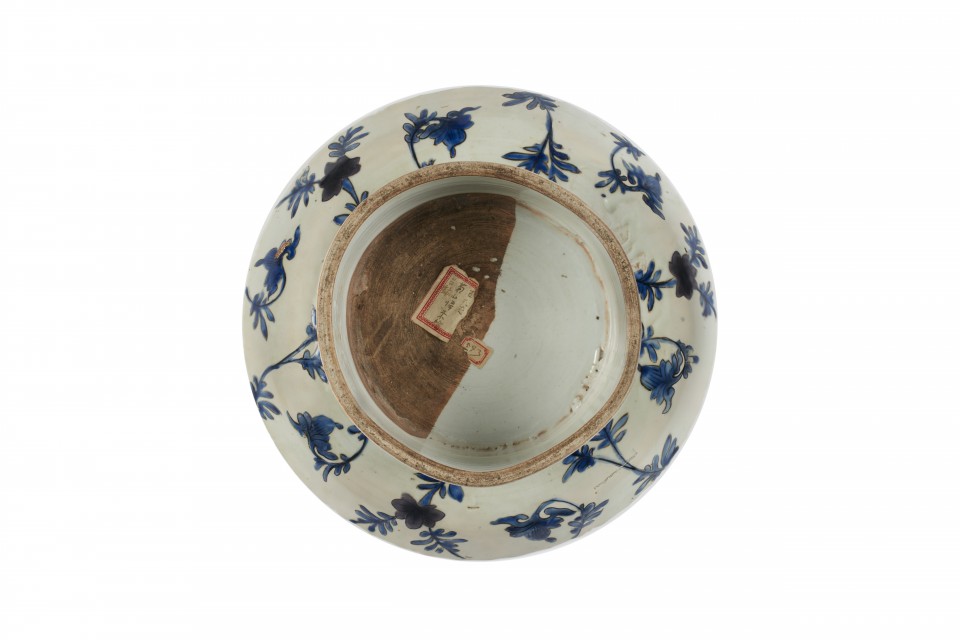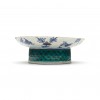
Footed Dish

Photography by Synthescape, Digital image © Asia Society

Photography by Synthescape, Digital image © Asia Society

Digital image © Asia Society

Photography by Synthescape, Digital image © Asia Society
Footed Dish
Mid- to late 17th century
Japan, Saga Prefecture
Porcelain painted wtih overglaze enamels (Arita ware, Kutani style)
H. 4 x Diam. 11 1/2 in. (10.2 x 29.2 cm)
Asia Society, New York: Mr. and Mrs. John D. Rockefeller 3rd Collection, 1979.246
Licensing inquiries
Pink, purple, and blue chrysanthemums with green and yellow leaves decorate the center of this dish. Around this centerpiece, the interior rim is divided into bands of alternating colors with black enameled motifs of waves and pine needles. The colorful enamel decoration extends to the underside and foot of the dish as well. Ko-kutani ware was for a long time believed to have been produced in Kutani Village in the ancient Kaga province (modern-day Ishikawa Prefecture), but more recent archaeological evidence suggests that kilns in Arita were primarily responsible for its manufacture. Ko-kutani ware and Kakiemon type Imari ware represent Arita-based enameled porcelain production that, although inspired by the same Chinese enameled porcelain tradition of Jingdezhen kilns, developed in two divergent directions, both in style and in target market, the former domestic, and the latter export.




